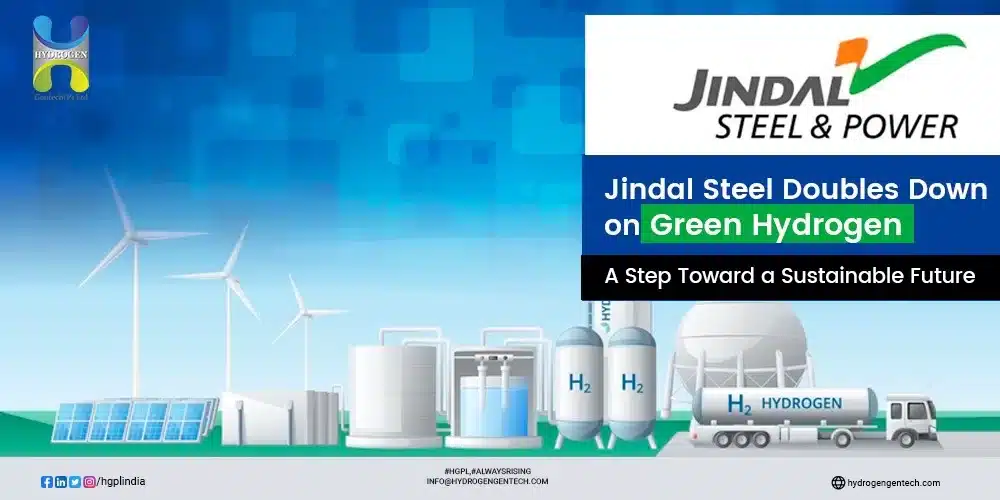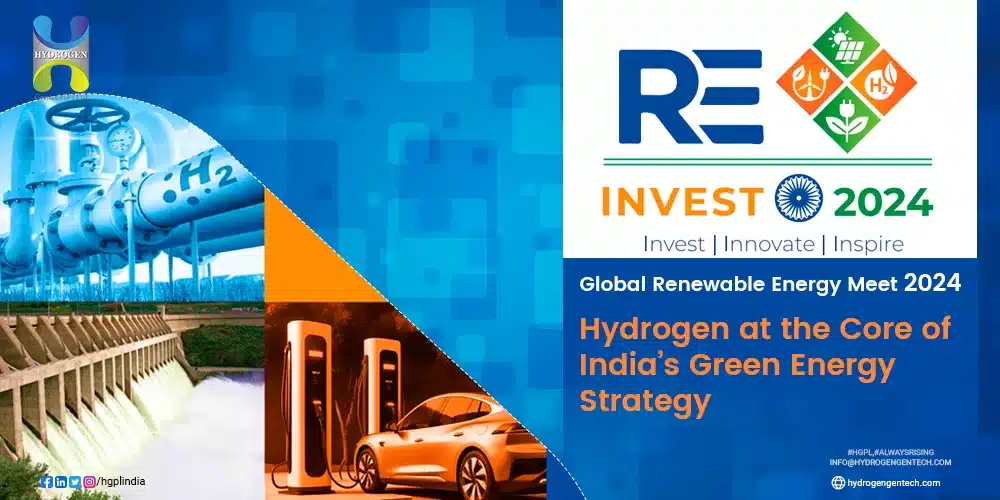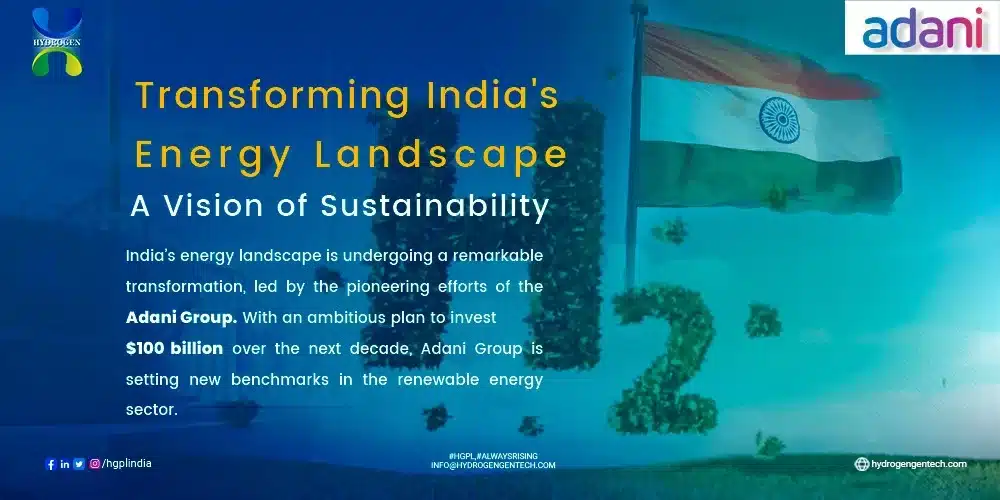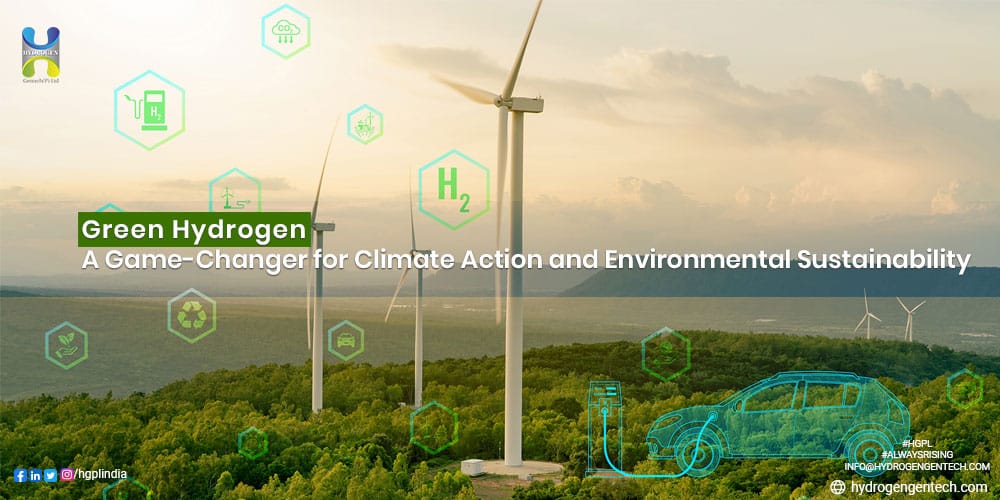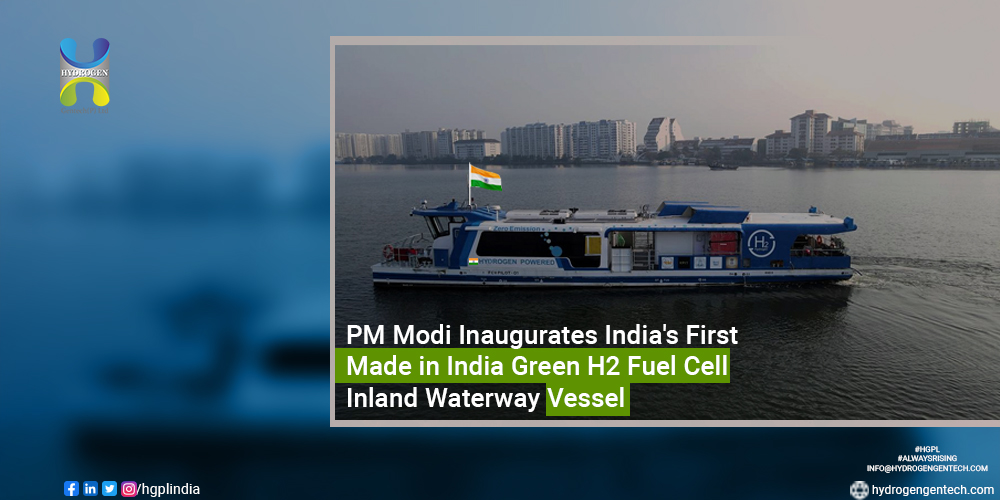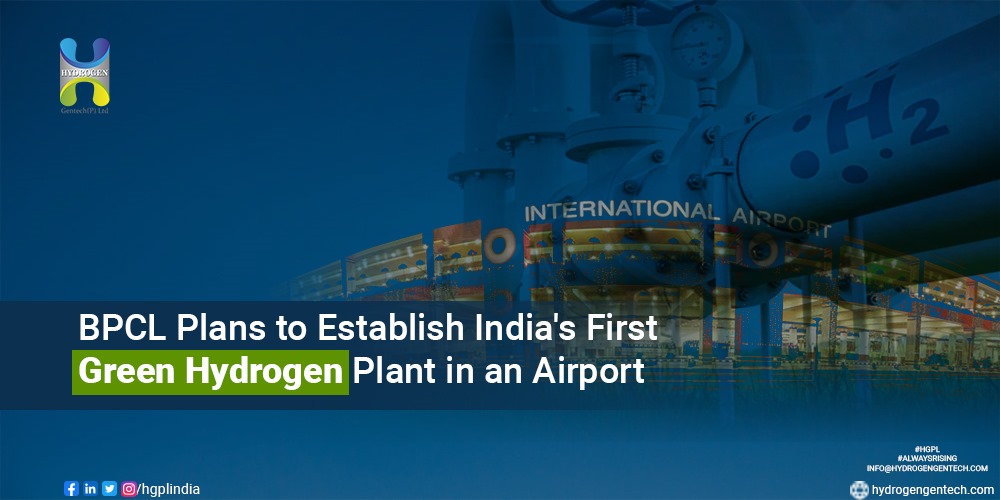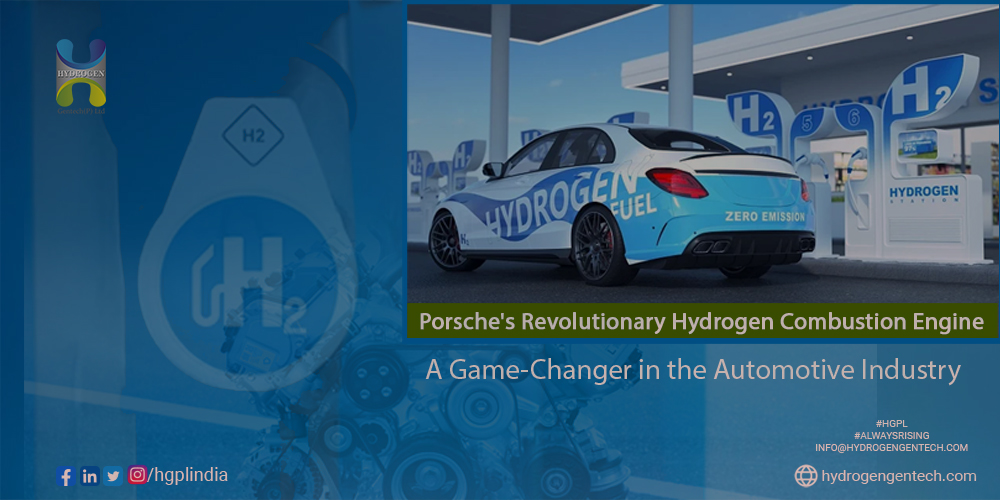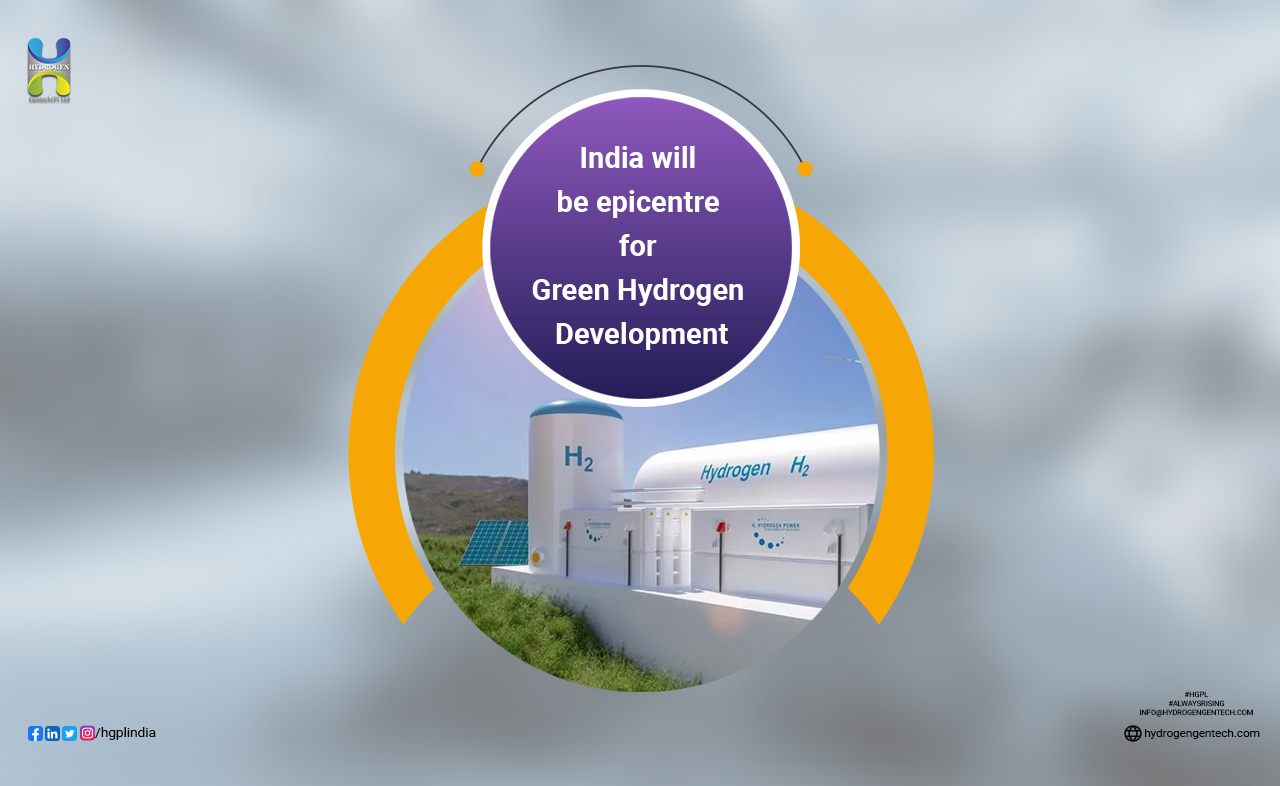As industries worldwide shift toward sustainable practices, the steel sector is under increasing pressure to reduce its carbon footprint. Jindal Steel and Power Ltd (JSPL), one of India’s leading steelmakers, is rising to the challenge by placing green hydrogen at the center of its decarbonization strategy. In collaboration with Jindal Renewables (JRPL), JSPL is setting a new standard for clean steel production and paving the way for the industry’s transition to a low-carbon future.
This commitment not only aligns with India’s National Hydrogen Mission but also emphasizes JSPL’s leadership role in the movement toward greener industrial processes. Let’s explore how JSPL is leveraging green hydrogen to advance a sustainable future.
Green Hydrogen: A Catalyst for Sustainable Steel Production
Steel production is one of the largest sources of industrial carbon emissions, primarily due to the reliance on coal and natural gas. Traditionally, the Blast Furnace-Basic Oxygen Furnace (BF-BOF) method, which depends on coal as a reducing agent, has been the industry standard. However, green hydrogen—a form of hydrogen produced using renewable energy—offers a revolutionary alternative. When used in the Direct Reduced Iron (DRI) process, green hydrogen can replace fossil fuels and eliminate most carbon emissions associated with traditional steel production.
Jindal Steel’s adoption of green hydrogen is more than a trend—it’s a commitment to a clean, energy-efficient production process that drastically reduces its carbon footprint. This initiative is a model for the industry, showing that steel production can become part of a sustainable, low-emission economy.
Strategic Partnership with Jindal Renewables: Decarbonization in Action
On September 16, 2024, JSPL and JRPL formalized their partnership through a Memorandum of Understanding (MoU), aimed at implementing green hydrogen in JSPL’s DRI units in Angul, Odisha. This collaboration is set to establish India’s largest domestic green hydrogen investment by a steelmaker, with JRPL set to produce up to 4,500 tonnes of green hydrogen annually. Additionally, JRPL will supply around 3 GW of renewable power, further reducing JSPL’s reliance on coal-powered electricity by an estimated 50% within the next few years.
With the project expected to launch by December 2025, Jindal Steel’s operations in Angul will soon integrate sustainable practices that reduce emissions, stabilize energy demands, and pave the way for a greener steel industry.
The Impact of Green Hydrogen on JSPL’s Sustainability Goals
- Significant Carbon Emission Reduction:
The primary benefit of green hydrogen in steel production is the reduction of CO₂ emissions. By incorporating green hydrogen and renewable energy, JSPL aims to substantially cut its emissions, aligning with both national and global carbon reduction targets. This move positions JSPL as a front-runner in the journey toward low-emission steelmaking. - Enhanced Energy Efficiency:
Green hydrogen is produced using renewable energy, making it a cleaner and more energy-efficient resource compared to traditional fuel sources. JRPL’s provision of 3 GW of renewable energy, alongside green hydrogen production, will bolster JSPL’s energy efficiency, ensuring cleaner and more sustainable operations across its facilities. - Long-Term Economic Benefits and Job Creation:
JSPL’s strategic investment in green hydrogen and renewable energy is expected to yield substantial economic benefits, especially as global demand for low-emission products rises. Moreover, the green hydrogen project will generate jobs across the supply chain, contributing to India’s green economy and promoting the development of a skilled workforce. - Leadership in Sustainability and Innovation:
JSPL’s commitment to green hydrogen sets a new benchmark for sustainability within the steel industry, both in India and globally. By pioneering green hydrogen production and usage, JSPL reinforces its brand as a leader in responsible manufacturing practices—a quality increasingly valued by environmentally conscious clients and investors.
Aligning with India’s National Green Hydrogen Mission and Global Goals
JSPL’s green hydrogen strategy is in alignment with India’s National Green Hydrogen Mission, which aims to establish the country as a global hub for green hydrogen. The mission envisions India’s role as a leader in sustainable energy, with targets to decarbonize industrial sectors like steel, refineries, and cement. By leading this initiative, JSPL is not only supporting national goals but also contributing to international efforts to mitigate climate change and promote cleaner energy sources. This initiative strengthens India’s position as a key player in the global green hydrogen economy and serves as a blueprint for other industries looking to transition to sustainable energy sources.
A New Era of Sustainable Steel Production
The steel industry is at a critical juncture. To remain competitive and compliant with evolving environmental regulations, companies must invest in technologies that reduce their carbon footprint and improve energy efficiency. By partnering with Jindal Renewables to implement green hydrogen production and renewable power, JSPL is setting a transformative example for the industry. Sanjay Singh, Director of Strategy and Corporate Affairs at JSPL, aptly described the collaboration as a “testament to [JSPL’s] unwavering commitment to sustainable development and innovation.”
This investment in green hydrogen is not without challenges—high initial capital costs, infrastructure demands, and the current expense of green hydrogen production all pose obstacles. Yet, as technology advances and demand grows, these costs are expected to decrease. For companies like JSPL, early adoption of green hydrogen represents both an economic and environmental advantage, ensuring a long-term competitive edge in a rapidly changing industry.
As India’s focus on renewable energy intensifies, Hydrogen Gentech Private Limited (HGPL), a leader in manufacturing green hydrogen balance-of-plant systems, is positioned to support this transformative shift toward cleaner energy. With a deep commitment to innovation and sustainable practices, HGPL is ready to meet the rising demand for robust green hydrogen infrastructure, both in India and globally.
Hydrogen Gentech Private Limited (HGPL): Powering the Green Hydrogen Future
At Hydrogen Gentech, we are driven by innovation, sustainability, and engineering excellence. With extensive experience in designing and manufacturing green hydrogen balance-of-plant solutions, we’re proud to contribute to India’s green energy mission. Our plants are crafted to be scalable, highly efficient, and flexible, meeting the unique needs of industries seeking to decarbonize and transition to a more sustainable future.
Conclusion
Jindal Steel’s bold move into green hydrogen marks a new chapter in India’s steel industry, where environmental responsibility and industrial efficiency converge. Through its commitment to green hydrogen and renewable energy, JSPL is setting a strong precedent for sustainable manufacturing, inspiring other companies to adopt cleaner technologies and champion a low-carbon future. As the world’s need for sustainable solutions grows, JSPL’s pioneering investment in green hydrogen and renewable energy underscores the steel industry’s potential to drive meaningful change in global sustainability efforts.


